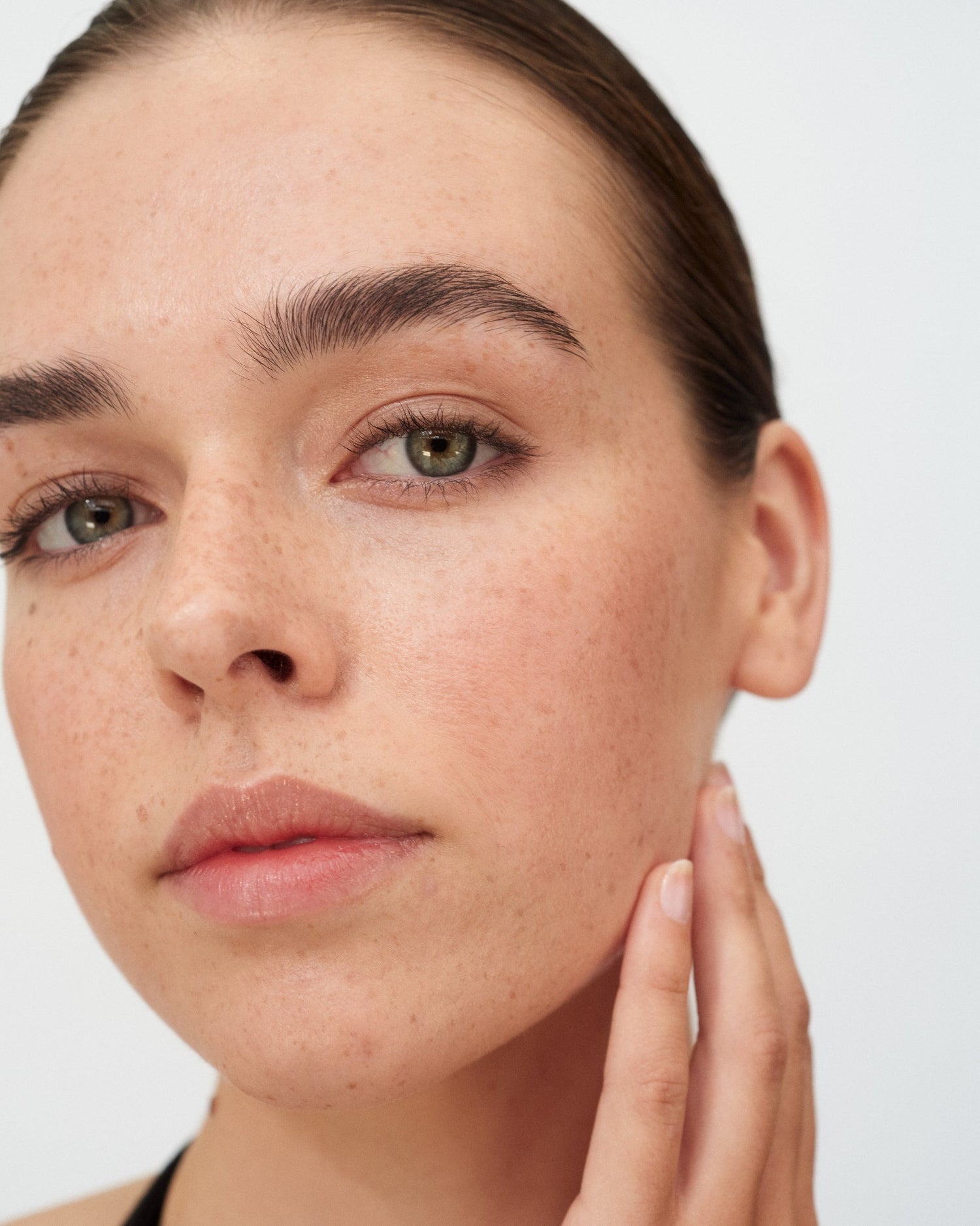Although LED (light emitting diode) light therapy has been used for decades, it has only recently transformed from an exclusive in-office treatment to a convenient at-home device. Since it’s a relatively new skincare tool, beauty enthusiasts often have queries about its effects. One of the most-asked questions is whether LED light therapy can cause or increase pigmentation. Short answer: no, in most circumstances. Long answer: read on.
Can LED light therapy cause hyperpigmentation?
When people hear ‘light’, they might conflate it with the kind of light that can be harmful to the skin. Exposure to the sun’s ultraviolet (UV) light wavelengths, specifically UVA and UVB, is known to cause skin damage. This can create issues such as increased pigmentation, dryness, fine lines, wrinkles, and most worryingly, skin cancer.
Understandably then, is the question of whether LED light therapy can increase pigment formation. UV light exposure can trigger the formation of a compound called tyrosinase. This prompts melanin production, leading to the visible effects of increased pigmentation. It’s what ‘hyperpigmentation’ refers to.
Fear not: our LED lights have no association with UVA or UVB light wavelengths. LED light does not trigger tyrosinase formation, and in fact, can help reduce the appearance of UV exposure-related hyperpigmentation.
There are contraindications that make some people unsuitable for LED light treatments. A comprehensive list of contraindications and suitability notes can be found on our FAQs page here. If you’re unsure about your freckles, pigmentation, or hyperpigmentation - or have any concerns about LED light therapy - we recommend consulting with your healthcare provider before using an LED light therapy device.
Can LED light therapy reduce hyperpigmentation?
LED light therapy does not use UV light or cause UV exposure-related hyperpigmentation. It can actually achieve the opposite: LED light is known to be beneficial for reducing the appearance of hyperpigmentation and uneven skin tone.
Published clinical studies indicate that red and near-infrared LEDs used at optimal wavelengths, irradiance and energy outputs, like those found in the SAN LUEUR Advanced LED Light Therapy Facial Mask, help decrease the appearance of hyperpigmentation.
Our device features red LED light (633nm). It targets the dermis layer of your skin and can be used for reducing the look of hyperpigmentation. It also offers near-infrared light (830nm), reaching the subcutaneous layer of your skin to improve the appearance of your skin tone and texture by stimulating the production of collagen and elastin.
Is LED light therapy safe for freckles or for darker skin types?
LED light therapy is not associated with an increase in hyperpigmentation for most people – but there are some caveats. For those with freckles or those who have darker skin types (Fitzpatrick III and IV), blue light may temporarily exacerbate pigmentation. However, a clinical study showed that the use of near-infrared light post use of blue light can be used to help reduce or negate any hyperpigmentation potentially caused by blue light. So for those using blue light, it's recommended that you use it on low strength and to follow with a session of the dual red and near-infrared infrared light setting. This will ensure that you don't get any unwanted pigmentation.
Is LED light therapy safe for photosensitivity?
Photosensitivity broadly refers to an unusual or extreme reaction to sunlight exposure. It can be caused by many factors including genetics, some medical conditions, or some medications. There is also a range of common substances that can cause photosensitivity: St John’s Wort, antibacterial soaps, artificial sweeteners, petroleum products, and cadmium sulphide (a chemical injected into the skin during tattooing).
We do not recommend anyone with a photosensitivity condition, or taking any substances that could cause photosensitivity, undertake LED light therapy treatments. If you’re unsure about your suitability please speak to a healthcare provider or contact us before using an LED light therapy device.
Is LED light therapy safe for melasma?
LED light treatments can reduce the appearance of melasma, and can be used in combination with other reduction modalities. However, it is not known to prevent or stop melanin production itself. This is because the exact, medical cause of melasma is not fully understood. However, there are factors which are linked to it, including:
- Hormonal changes, particularly during pregnancy,
- Ultraviolet (UV) light exposure,
- Family history and genetics,
- Some medications.
The SAN LUEUR Advanced LED Light Therapy Facial Mask is not a medical device and we do not suggest people who experience melasma use this device as a replacement for any professional medical treatment. However, people with melasma may find their overall skin quality may be improved by LED light therapy treatments.
If you’re interested in learning more about how your skin can benefit from the SAN LUEUR LED Facial Mask, head to our ‘The Science, Unmasked’ page, 'SAN LUEUR Advanced LED Light Therapy Facial Mask' page or our FAQs. If you have any questions or you would like to get in touch, please contact us at info@sanlueur.com.




